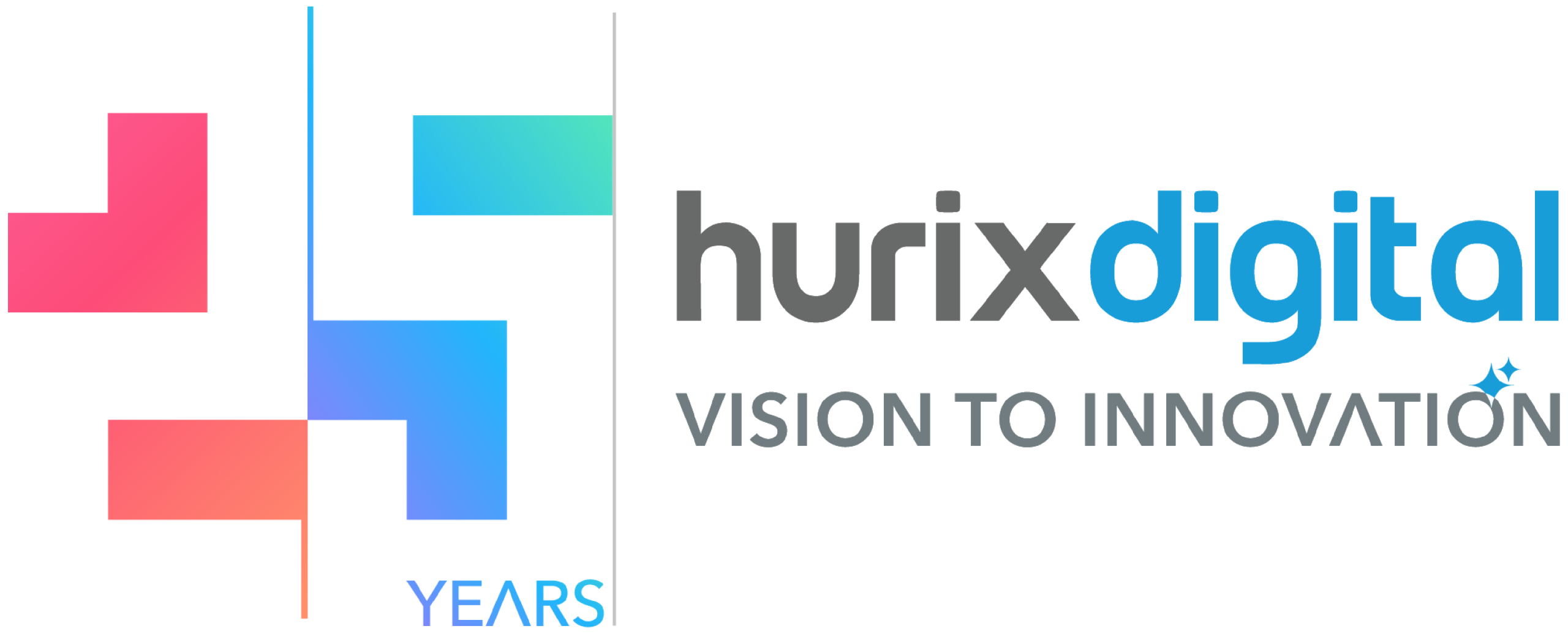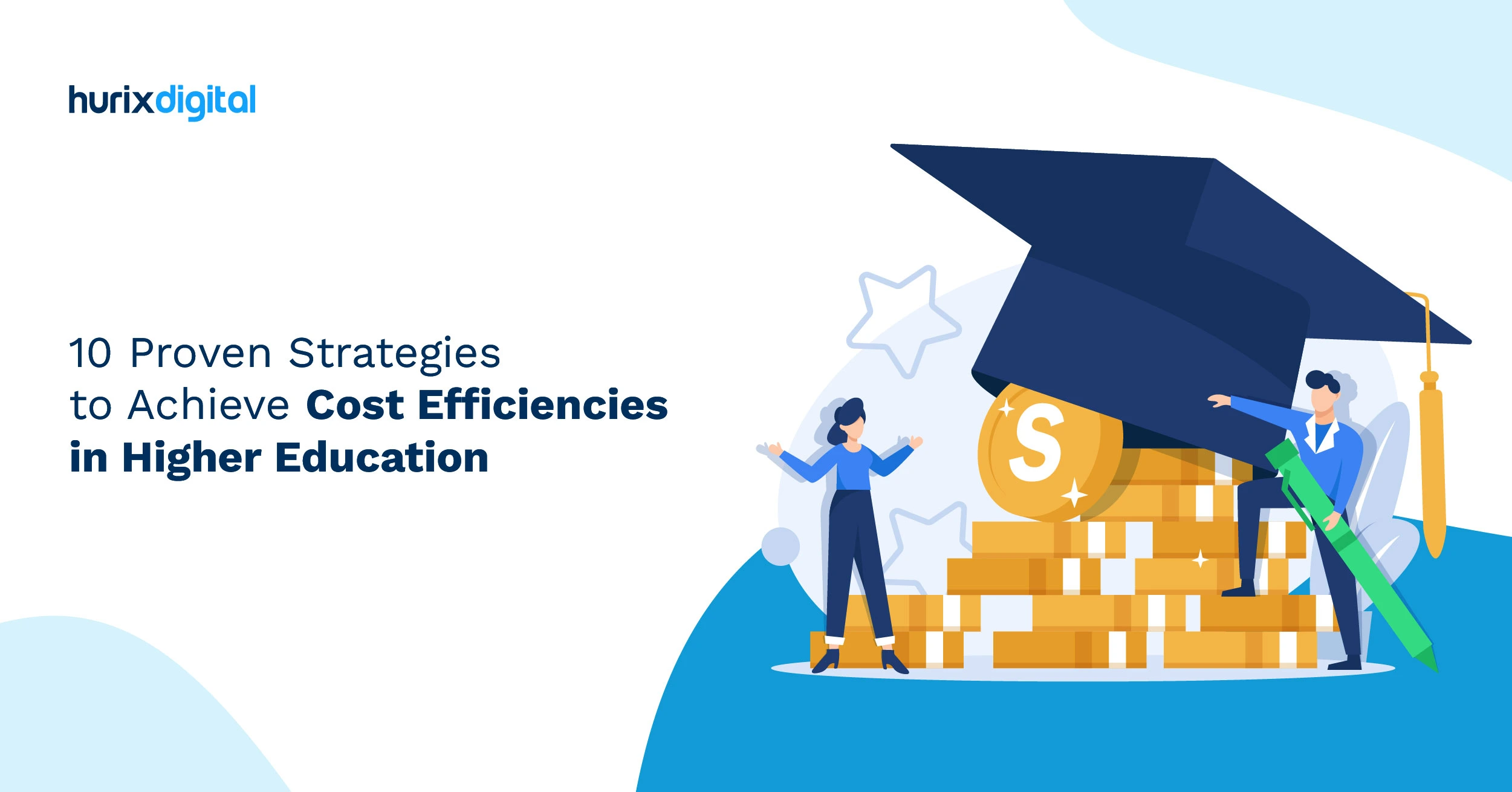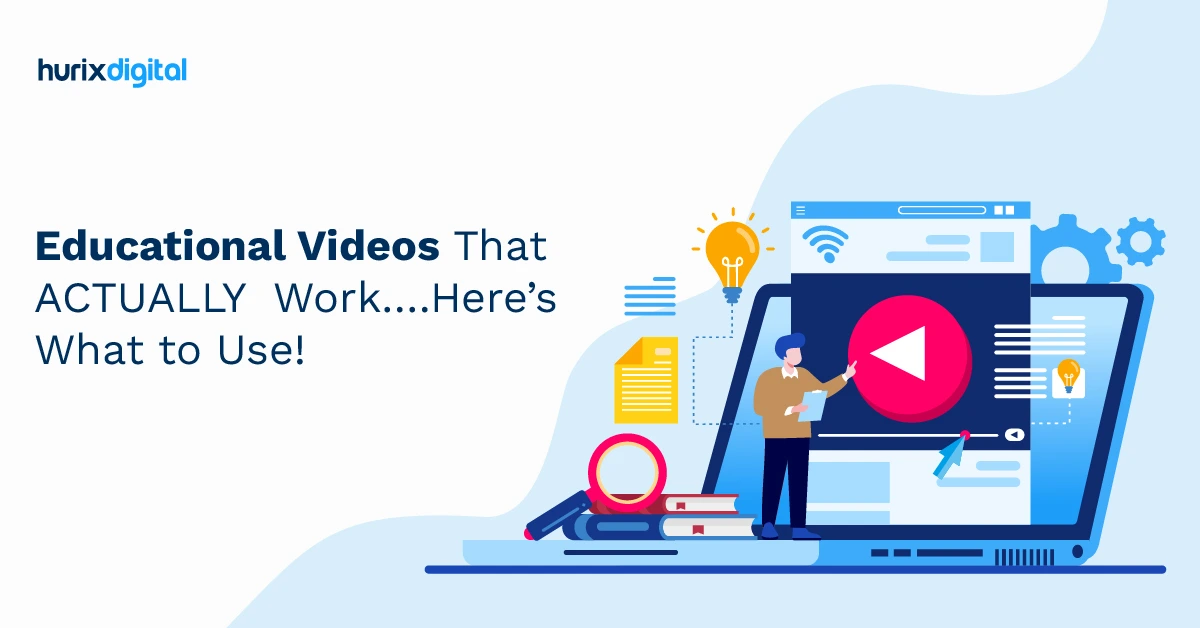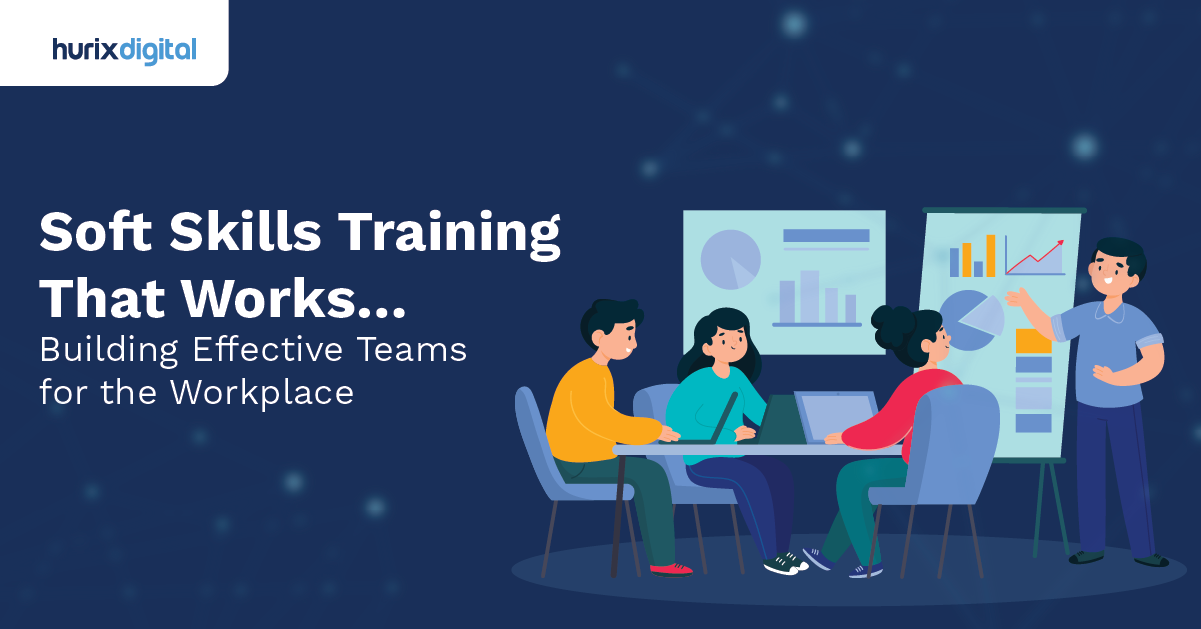
How to Implement Personalized Learning That Truly Engages Students?
Summarize with:
Gone are the days when one-size-fits-all teaching methods worked for students. With time, technology is advancing, and learning is evolving with these changes. There are many ways of better engaging students with technology now, such as video lessons, audio assistance, and visual learning.
Students now have access to extra care and attention from teachers to unleash their potential and reach for excellence. Personalized learning experiences become important here because they allow students to learn better and grasp concepts faster.
The market for personalized learning was valued at $1.8 billion in 2023 and is estimated to reach $19.86 billion in 2030. This detail highlights how teachers are integrating this learning to better cater to students’ interests and requirements.
Let us read on to find out the different innovative teaching methods educators can use to make their teaching more engaging and powerful.
Table of Contents:
- What is Personalized Learning?
- What are the Benefits of Personalized Learning?
- How to Design Personalized Learning Strategies That Impact Students?
- Student-Teacher Collaboration for Curating Personal Learning Goals
- Integrate Multiple Learning Styles to Make Education More Accessible
- Ensure Immersive Learning Through Gamification
- Introduce Interactive eBooks to Learn in the Classroom and Beyond
- Use eLearning Tools for Customized Feedback and Assessment
- Top 10 Adaptive Learning Techniques for Better Personalized Learning Experiences
- Train to Assess and Customize Teaching Techniques
- Use of Interactive Learning Platforms
- Encourage Student Participation
- Video-Integration
- Mobile-Friendly Learning
- Track Progress
- Create Personalized Learning Plans
- Flexible Seating and Learning Environments
- Create Personalized Playlists
- Gamification in the Learning Experience
- How is AI Used for Personalized Learning?
- Final Thoughts
What is Personalized Learning?
Each student’s approach and rate of learning differ, and to achieve positive learning outcomes, schools must personalize programs to fit these unique needs. Personalized learning is an educational strategy that centers instruction on each student’s requirements, interests, and abilities.
While differentiated instruction is offered to each student depending on their unique learning attributes, the ultimate objective and academic requirements are the same.
Utilizing technology in education that adapts to each student’s skill level is essential to achieving this goal. Additionally, proponents of personalized learning are increasingly advocating for education schools to support each student’s social, emotional, and physical growth.
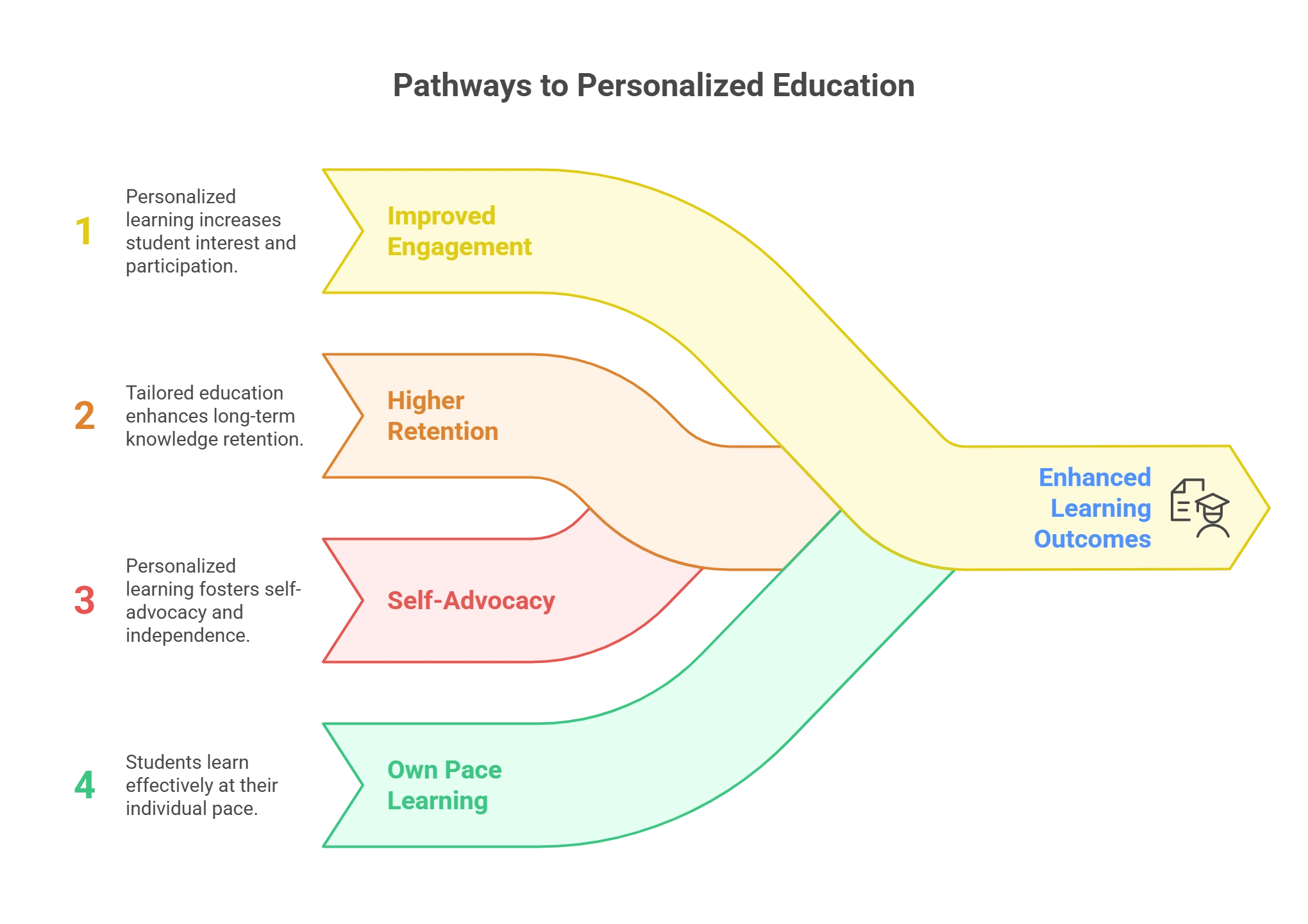
What are the Benefits of Personalized Learning?
Several academic programs and educational institutions are implementing personalized learning for education. Here are the top four advantages of personalized learning to help you understand why:
1. Improves Student Engagement
Adapting instruction to align with a student’s preferred learning style or optimal information consumption method can enhance engagement. For instance, some students prefer to learn through informational videos and audiobooks, while others prefer to read a textbook. This personalization may boost their desire to study, resulting in a more gratifying and joyful learning experience.
2. Ensures a Higher Knowledge Retention Rate
Personalized learning increases knowledge retention rates because students are more motivated and engaged. Further, personalization can align content with students’ abilities and requirements, making it more effective.
3. Promotes Self Advocacy Skills
One of the main advantages of personalized learning is that it gives students the individual attention they require to determine what they need to improve. As a result, they gain the confidence to speak out about the challenges they are facing.
Students become independent and gain self-advocacy when they are free to talk openly about their learning experiences.
4. Ensures Students Learn at Their Own Pace
Asynchronous delivery of personalized learning enables students to access the material at their own speed and on their own timetable. This adaptability might help students to learn according to their focus, frame of mind, and comfort.
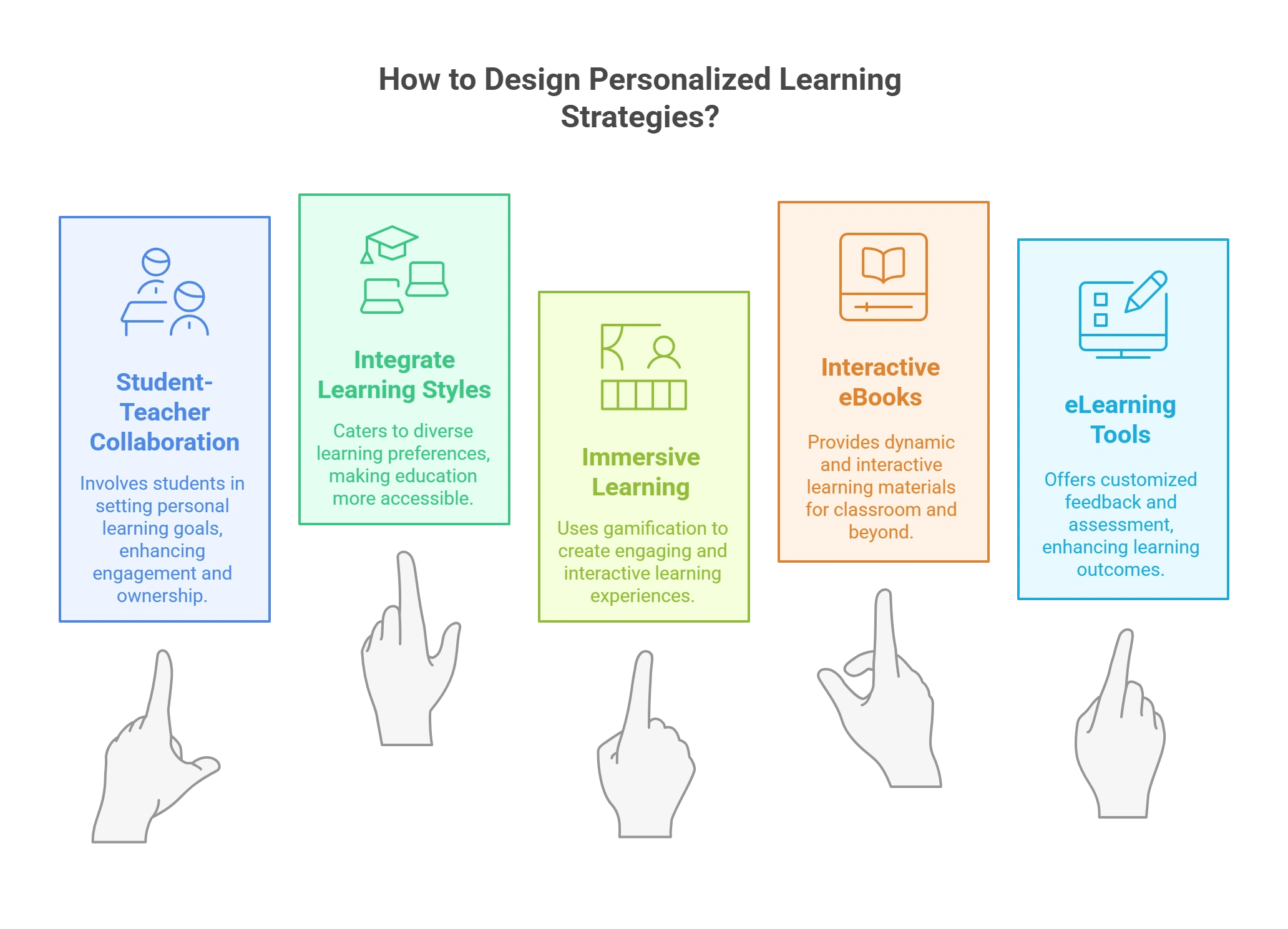
How to Design Personalized Learning Strategies That Impact Students?
Personalized learning is the future of education, as it helps identify students’ learning gaps and curate appropriate remediation strategies.
1. Student-Teacher Collaboration for Curating Personal Learning Goals
If educators want to develop a successful personalized learning approach, they must combine the course specifications with each student’s unique requirements and preferences.
Students and teachers must now develop short, intermediate, and long-term individual learning objectives in partnership. Expected outcomes must be precise and aligned with goals so that students can clearly see a course of action.
In addition, learning goals should ensure that students complete the lesson with a thorough comprehension of the important subject matter.
2. Integrate Multiple Learning Styles to Make Education More Accessible
Not every pupil has similar learning approaches or styles when it comes to online learning. This highlights how crucial it is to incorporate a variety of online training sessions and assignments into the instructional design of learning so that students can select the ones that best suit their needs.
Examples of personalized learning in the classroom include auditory learners choosing podcasts while visual learners view films to consume information, thus ensuring an accessible approach for all.
Thanks to this blended approach, every student can benefit from the course and design a personalized learning path most suited to their needs.
3. Ensure Immersive Learning Through Gamification
Research states that customized games enhance patience and willingness to take risks when played in a safe environment. They encourage innovation rather than passive learning.
Platforms like Hurix Digital and Adobe Captivate help education teachers quickly create games and group projects, providing them with a practical framework for a concept.
Gamification and virtual reality offer an immersive learning experience, encourage active participation, and help students resolve real-time challenges, providing ample scope for personalized learning.
4. Introduce Interactive eBooks to Learn in the Classroom and Beyond
Your teachers can experiment with creating personalized learning material using interactive eBooks. These consist of multimodal content, such as videos, music, animation, graphics, etc.
Interactive ebooks consider each student’s various learning preferences and integrate accessibility features (read-aloud, color contrast, etc.) to ensure that learning is engaging for all, including students with disabilities.
Interactive ebooks offer a variety of customization options in addition to unique study material. The markup, lookup, and bookmarking functions are among the most important. Using these resources, students can tailor their unique educational experiences.
5. Use eLearning Tools for Customized Feedback and Assessment
Online assessments are a crucial component of personalized learning. They assist teachers in monitoring student development, identifying shortcomings, and giving prompt feedback. They also notify pupils of the concepts they are mastering and those they need to review.
E-learning tools can help educators develop interactive assessments to ensure that they receive holistic feedback on student performance. For instance, online interactive formative assessments like MCQs embedded at the end of each chapter can:
- Deliver instant feedback.
- Help students fill in knowledge gaps before moving on to more complex topics.
- Help educators determine which teaching methodologies resonate better.
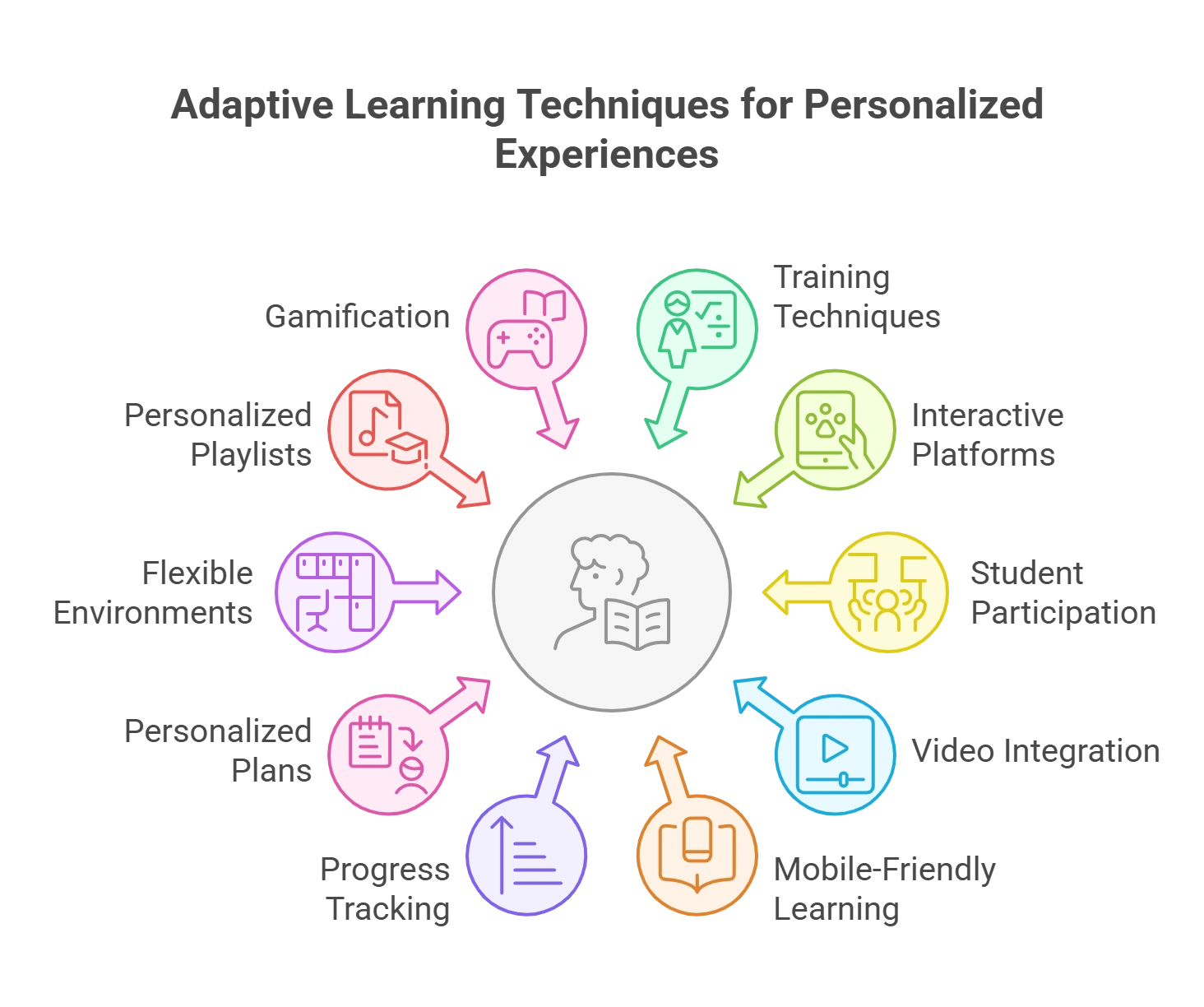
Top 10 Adaptive Learning Techniques for Better Personalized Learning Experiences
Here are the top 10 effective personalized learning strategies that teachers can consider using in the classroom.
1. Train to Assess and Customize Teaching Techniques
Student-centered learning requires teachers to grasp the concept of personalized learning before they can implement it in class. Institutes can consider discussing different strategies and ways to implement the process before actually trying it in class.
Use courses for teachers and admins in the institute to give a detailed view of customized teaching. This way, you can be sure that the teachers can unleash the full potential of students in the classroom.
2. Use of Interactive Learning Platforms
With about 57% of students reporting higher satisfaction rates with technological use, it is becoming an indispensable part of education. Learning management systems (LMS) have elevated personalized learning experiences significantly in the last few years.
These platforms encourage the use of multimedia learning resources like videos, audio, animations, and quizzes. They can make for fun classroom and online activities and keep students engaged with different ways to memorize and retain information.
3. Encourage Student Participation
Personalized learning allows students to participate closely in their educational journey. This allows them to identify their pain points and talk about them with their teachers. Goal achieving becomes faster with this because students actively take part in reaching them.
Teachers can consider using options for the resources they provide for students to learn. This will allow students to make better decisions and exercise better self-advocacy.
4. Video-Integration
About 40% of students respond more positively to visual learning methods. This makes videos a crucial building block in customized education with different visual resources like animations, relevant videos on the topic from the internet, lectures, and informative clips that build knowledge beyond the curriculum.
Video learning can encourage students to expand their knowledge base and build curiosity about topics they would not know about without such resources. This can open up interesting discussions among students and enhance peer-to-peer learning.
5. Mobile-Friendly Learning
Smartphones are an effective way of engaging students with technology due to their increasing accessibility. Teachers can use resources like podcasts, online classrooms accessible on phones, and email attachments for each student to read and analyze in their own time.
Mobile learning allows students to connect better with other peers, get faster feedback from educators, and receive one-on-one help.
6. Track Progress
Tracking progress regularly with each student is a great way of analyzing their strengths and weaknesses. This allows teachers to modify their study plans accordingly and helps them better achieve their goals.
Interactive learning activities that focus on the competencies are effective for helping students understand their weaknesses and allow them to work better towards them. Such personalized learning experiences allow students to examine what is lacking in their education journey. This motivates them to allot more time to them and broaden their knowledge on the subject.
7. Create Personalized Learning Plans
Even if you teach students the same course, each responds to what is taught differently. It is essential to customize learning plans for them so that the course better caters to their needs.
For example, some students may struggle with one portion of the course while others may find a different section challenging. In this case, preparing coursework or materials according to the student’s specific needs can help significantly.
8. Flexible Seating and Learning Environments
Innovative teaching methods, like stepping out of traditional seating arrangements, can be a great way to personalize the learning experience. Horseshoe, circle, and alternative seating arrangements are some great ways to increase interaction among peers.
When students see personalized learning taking on a physical form this way, they will feel motivated to participate in the learning process more closely.
9. Create Personalized Playlists
Personalized playlists include activities that allow students to select and modify the ones that they like and dislike. In his method, students can choose the activities as and when they want to and complete them at their own suitable pace.
This curriculum design can include activities like individual and group projects, peer-to-peer collaboration, digital resources, and educational games. These activities require active participation and enhance students’ learning abilities.
10. Gamification in the Learning Experience
Using simulations used in games, Virtual Reality (VR), and Augmented Reality (AR) in the learning process can be significant tools in personalized learning experiences. These environments can help users explore their coursework in the virtual world, which can make things more interesting for them and allow them to connect better with it.
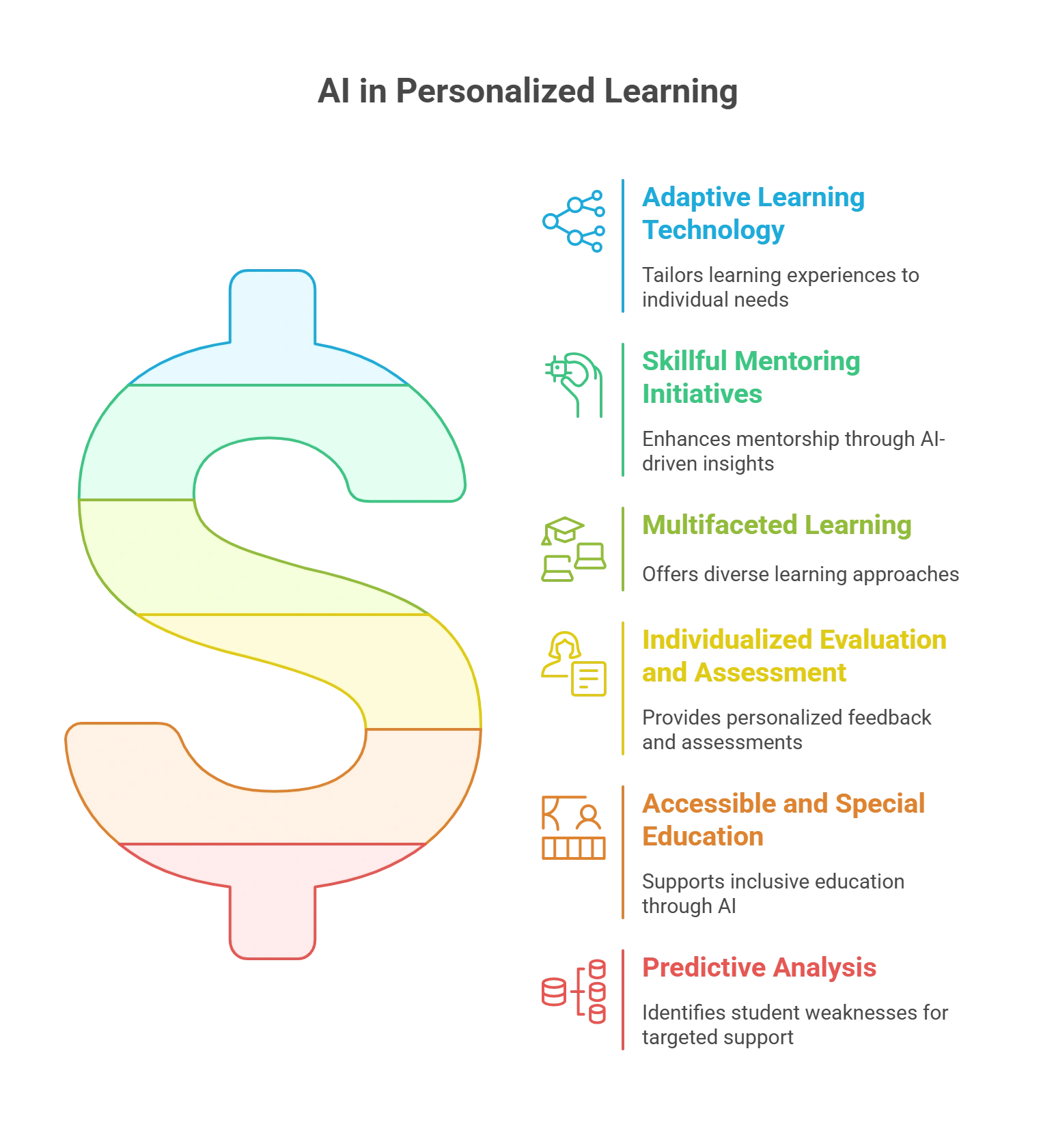
How is AI Used for Personalized Learning?
Personalized learning enabled by AI is a student-centered strategy that tackles the problem of students being disengaged from school.
AI personalized learning provides adaptive material, engaging experiences, and analytical tools to maximize learning results by customizing learning experiences to each learner’s preferences, needs, and pace.
Here are a few ways AI and personalized learning are transforming the new-age learning landscape:
1. Provides Scope for Adaptive Learning Technology
The majority of EdTech platforms available today use AI to provide adaptive educational environments. These platforms adapt in real-time, making sure that the pace and content meet the demands of the learner right away.
AI algorithms can be employed to modify learning content instantaneously based on a student’s performance in a variety of subject areas, including math and languages.
Do you recall those adaptive tests that change in difficulty depending on your responses?
There’s AI at work!
2. Ensures Skillful Mentoring Initiatives
Students may require that additional bit of assistance. Here’s where AI-powered tutoring systems come in, providing instruction based on each student’s unique needs.
It’s similar to having a tutor who is intimately familiar with your advantages and disadvantages. In addition to offering individualized advice, these AI-powered solutions frequently include entertaining elements like gamification.
Imagine having a virtual tutor available 24/7, prepared to help you at your earliest convenience. AI in personalized instruction systems is unique as it may transform education into an interactive experience.
They add components like tests, tasks, and prizes to make the process entertaining in addition to instructive.
3. Enables Multifaceted Learning
AI-powered education combines several formats—text, audio, video, and interactive elements—to create multimodal learning experiences.
This enhances the personalization and engagement of the educational process by enabling students to interact with the subject matter using methods that best match their learning styles.
4. Promotes Individualized Evaluation and Assessment
AI can automate the evaluation process and give pupils quick, individualized feedback.
With the use of intelligent grading systems, feedback may be sent more quickly on assignments, tests, and quizzes. This gives specific recommendations for additional learning and assists students in identifying their areas of progress.
5. Supports Accessible and Special Education
Every learner is distinct and special in their own way. Personalized learning using AI data-driven education has become a blessing for people with a variety of learning difficulties, providing adaptive learning solutions and assistive technology specifically designed for them.
Promoting Diversity, Equity, and Inclusion (DEI) has become crucial in education. In addition to ensuring a safer learning environment, using AI-driven technologies to detect and address improper information also upholds the values of equality and inclusivity in education.
6. Uses Predictive Analysis to Identify Student Shortcomings
Predictive analytics is a branch of artificial intelligence that makes use of statistical inference to test records and infer probabilities of potential outcomes. People engaging with data is essential to do predictive analytics to find trends and validate hypotheses.
Education data, including evaluation outcomes, grades, attendance, and behavior issues, can be converted into relevant solutions by using education software with predictive capabilities. It can enable educators, managers, and support staff to proactively spot warning signs in weak-performing students and choose when and how to offer assistance.
Final Thoughts
Every student has different needs, and it is best to try different methods with each one to see which works best for them. Student-centered learning can enhance course retention and performance tremendously if done right. With time and some trial and error, you can help your students grasp lessons faster and more effectively.
Hurix Digital offers course support for students that can help them grasp lessons faster and retain them for longer periods. We empower learners and teachers with course blueprints that align with specific educational goals and editorial services that allow thorough proofreading of the course material.
Institutes can benefit from our staffing assistance, which allows them to connect with expert individuals who can successfully implement personalized learning experiences in the curriculum.
Contact our team today to upscale your education journey!
Summarize with:

Senior Vice President – Business Development
at Hurix Digital, with over 25 years of experience in EdTech and workforce learning. He excels in business development, customer relationship management, and scaling digital learning solutions, driving global growth through innovative content, simulations, and AI‑driven training offerings
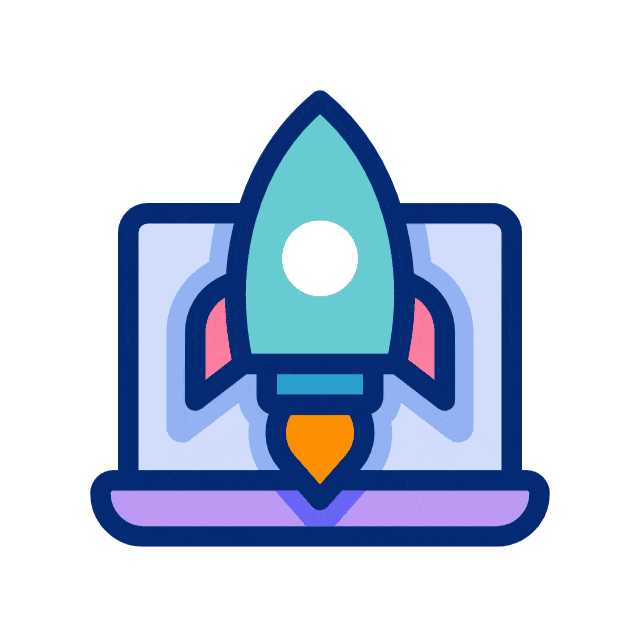 A Space for Thoughtful
A Space for Thoughtful 